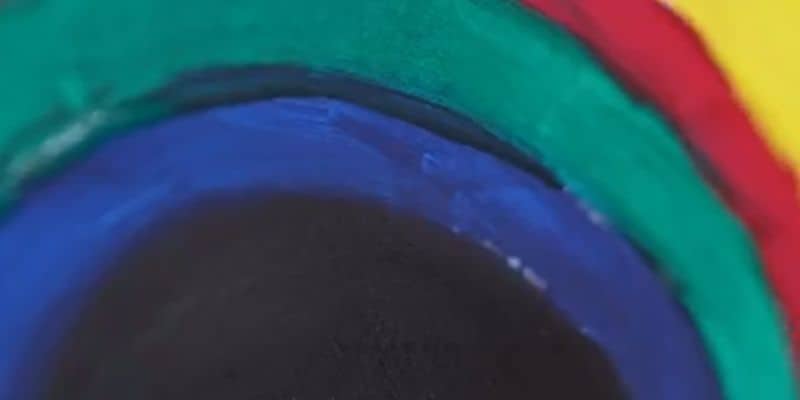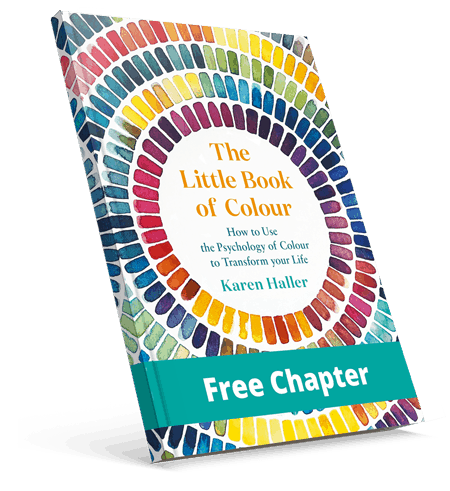Mental Health Awareness UK, navigating grief through colour

As it’s Mental Health Awareness Week here in the UK, I wanted to focus on something we all experience at some point in our lives, which is grief.
Grief first hit me hard when my father was ill. I felt it even before he passed away, and when he died nine years ago, that grief deepened in ways I couldn’t have imagined. I’ve since come to realise that grief isn’t limited to losing a loved one.
I’ve felt it just as deeply through the loss of friendships, the end of relationships, and losing a job that meant a great deal to me at the time. It can emerge with any traumatic or life-altering event.
Last year, I experienced a new wave of grief when my mother passed away. Watching her decline brought back many of the same feelings I had with my father, along with new layers of sorrow and reflection.
Grief is part of tough part of life – it hurts, it’s messy. It stays with us, shifts over time, and continues to shape how we move forward.
I wanted to share a video I love by UK clinical psychologist Dr Julie Smith, as she beautifully explains the grieving process using colour. I find it a powerful and compassionate way to help make sense of what can feel like an overwhelming and often isolating experience.
She starts the video by saying if you’ve ever lost someone, you’ve probably asked yourself will the pain of this grief ever really go away?
In the video she uses a black painted circle to represent grief. Black in this context is a great colour to use as represents the dark, heavy abyss we can often find ourselves in.
There is an old saying that time heals all wounds. It certainly has been my experience that my grief is lessening over time. But Dr Stevens suggests that grief never fully disappears.
The perspective she offered instead, is that overtime we can to begin to engage with our new reality and build new experiences around our grief.
What I love is that she demonstrates this visually through the use of colour, “wrapping that black circle of grief” in more joyful, brighter colours.
Although we still might experience moments of deep pain and sorrow, Dr Stevens says there will also be moments of new joy, love and purpose as these new layers of our life build around our grief. It’s like our life grows around the pain so that even though it’s still there you can still create a life that is beautiful and meaningful to you.
For me, I miss my father more as each year passes, and now my mother too. Her loss is still very raw, but I take comfort in knowing they are back together.
While the pain of losing them will always be with me, I’ve gradually wrapped it in joyful, colourful life experiences of my own, ones that help me keep living fully and moving forward. I know that’s what they would have wanted for me.
And even though they’re no longer physically here, they remain a constant presence in my life. Every night, before I go to sleep, I say goodnight to them. It’s my quiet way of keeping them close.
What I took away from Dr Stevens video was that we can live with and move beyond grief through building new colourful memories into our life experience.
And that’s how I use colour on a daily basis. I find colour to support how I’m feeling or how I want to feel.
How we can use colour psychology to support good mental health in our everyday life
Below I’ve shared a few colours and some of their positive psychological traits and how they can support you from the soft, gentle soothing colours to the bold, bright and vibrant, so that you can use colour to support you and your mental health.
Dark Green aids to create balance and harmony, providing a sense of reassurance and peace.
Yellow so that even on the greyest of days it’s like taking the sunshine with you.
Orange can bring a touch of playful fun to any occasion.
Red can help with motivation and feeling physically energised.
Soft pink is like wrapping yourself in a snuggly, warm embrace.
Purple to support you when you want to take time out for reflection.
We all experience grief in different ways and at different levels depending where we are in our process, so wherever you are I hope this helps you today.
If you would like to find out more about which colours can support you in the way you need, check out my book, The Little Book of Colour.
If you would like to watch the video, head over here where you can also check out more of Dr Julie’s insights.
If you would like to find out more about Dr Julie, her book and free resources, head over here.
Here’s to finding colour in the moments that matter,
Karen x
Image: Dr Julie’s Instagram post

SIGN UP FOR MY NEWSLETTER
Get a Free Chapter from The Little Book of Colour
© Karen Haller
Designed by cptcreative.com